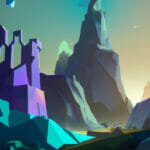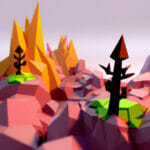Making video games isn’t all about programming. In fact, the average consumer never even sees the programming that goes under the hood – even as essential as that programming is. Do you know what they do see though?
The game art. Unless you’re making a text-based game, graphics (i.e. the game art) are what gives people their first impression of any game. It’s also what provides users with information about how the game is played and what consequences their interactive actions have. They are essential to our modern gaming space, which is why there is an entire subfield of the game industry completely dedicated to game art.
However, if you’re not already an artist, this may be a foreign field to you. Or, even if you are an artist, you might not be sure whether it’s a worthwhile career or how to pursue it.
This guide will aim to define the field of game art thoroughly, and also help you with pursuing it as a career! If you’re intrigued, we hope you dive into this exciting topic with us.
Table of contents
What is Game Art
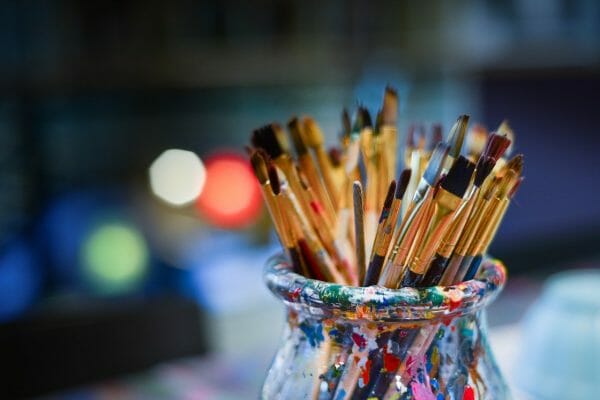
To start things off, let’s understand a bit more about what game art is.
Game art, in the most general sense, is basically any sort of visual used for a game (both 2D and 3D. The UI? Game art. The characters and enemies? Game art. The backgrounds? Game art. Weather effects like snow and rain? Game art. Storyboards used for the pre-production of the game? Game art. While programming is, of course, needed to place and use the visuals, anything the user sees is an aspect of game art – as well as any art developed during the planning stages of the game. Even the game logo is technically an aspect of game art.
The above being said, there are two important concepts needed to truly understand the scope of game art and its importance to the overall game design: types and subfields of game art which we will discuss in a moment.
In understanding the nuances of game art and its associated careers, one also can’t overlook the essential skills needed to create unique and captivating game assets. An incredible resource to consider in this journey is Zenva’s Game Artwork Academy, a comprehensive curriculum that offers practical lessons on creating custom 2D and 3D game assets. With its extensive array of topics from mastering digital art tools like Blender and Photoshop, to creating a versatile portfolio in Pixel art, vector art, and 3D models, the Academy equips learners to not only understand the artistry involved but also the potential rewards of game art creation.
Types
We’ll first talk about types when it comes to game art. Now, we’re not discussing personal art styles here in the sense of how someone draws something (i.e. anime, impressionist, etc.). Every artist has a unique style all their own, so that would take forever to talk about. Plus, this is often dictated at the game design level anyway. Instead, we want to focus on the four main “types” of art you’ll see in terms of their use in video games.
Pixel Art
![]()
The visuals we see on any kind of screen are made of individual squares of color, which we call pixels. All these pixels combined are essentially what give us the image we see – whether that’s the screen you’re looking at now or a game character. Pixel art is a type of digital art that takes advantage of this and focuses on creating art at the pixel level – meaning the artist painstakingly assigns each square a color until a complete, cohesive image is formed.
This type should be familiar if you’ve at all played any old-school Nintendo games such as Super Mario Bros., Sonic, etc. Due to limitations in the hardware, the 8-bit and 16-bit eras extensively used pixel art since they were easy to make clean and fit within the specs they could afford. That being said, it is still used in the modern era for many games such as Stardew Valley, Undertale, and so on.
Vector Art
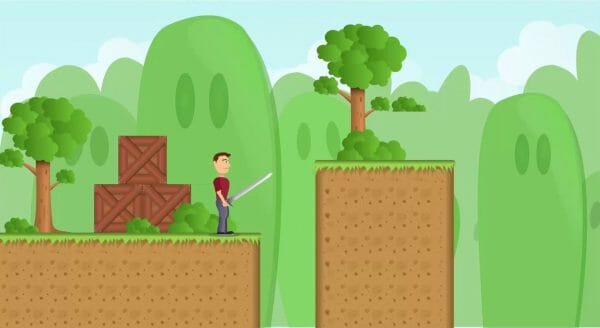
Vector art is a type of digital art based around mathematical formulas. In this sort of art, artists use curves, lines, and points only to create the image. The advantage of this type of art is its scalability. As the edges are mathematically calculated from these tools, there is no loss in quality should you need to resize the image smaller or larger. While this does present some limitations compared to the next type, raster, it does result in a clean look.
Though not as popular for characters or backgrounds in games, you will see vector art used quite a lot for logos and UIs (though not exclusively). Particularly in the case of UIs, which often need to be able to be adjusted to screen size, vector art has a distinct advantage because of the scalability mentioned above.
Raster Art
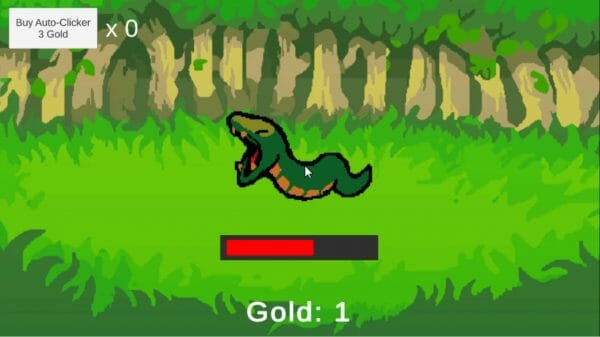
Raster art is any type of digital art based on rows and columns of pixels. In fact, pixel art in itself is a type of raster art. However, for the purposes of this list, we are separating the two out because they have different focuses. While pixel art focuses on each individual squares and clean pixel edges, which generally means the artist is zoomed in very close to their work and making smaller-sized graphics, most raster art takes a more general view.
In other words, this type is basically what you’d consider for 2D art. Artists sketch and color just as they would with traditional pencil and paper. Though it doesn’t have the same scalability advantages as vector art, it does grant artists the ability to have more freedom. Anything you think could be done on paper, can be done with 2D raster art.
When it comes to 2D graphics for video games, this is the most likely type of art you are to see. It encompasses everything from UI objects, to characters in visual novels, to hand-painted backgrounds, and so forth.
3D Art
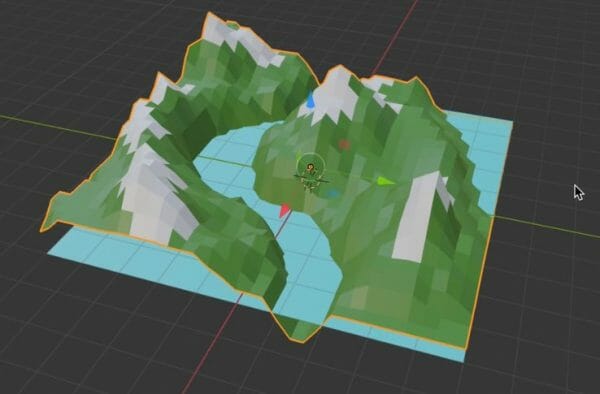
3D art, as the name implies, is digital art based on 3D models. Using a 3D modeling program, such as Blender, artists manipulate flat polygons made up of vertexes (points), edges, and faces to connect them up into a 3D shape. Similar to vector art, much of this is based on mathematical calculations, so 3D models are also scalable with no quality loss. However, unlike 2D art, 3D models also have a distinct advantage of being generally easier to animate, since computers will calculate the proper shape of each polygon based on where vertexes are moved.
Of course, this game art type encompasses basically any video game that makes use of 3D models – which has become just as dominant in the gaming world.
Subfields of Game Art
Now that we’ve established the types of art you might see, we need to talk about the subfields of game art. In this case, we’re focusing on subfields more often used for job postings as opposed to general “game artist”, though be aware we won’t cover every subfield that is possible (art is a big field)!
Concept Art
When it comes to game art, concept art is the art that will always come about first in a game’s production. This sort of art is focused on capturing the “concept” of the game and game design. This includes things such as character design concepts, background design concepts, storyboarding for cutscenes, and so forth. It is the art that is basically used to plan the entire visual direction of the game – including the art style and atmosphere. While most concept art isn’t used as the final art piece for the video game, it is the foundation on which all the game art is made for the final production.
Character Art/Modeler
As the name implies, character art is anything that involves game art design for characters – including NPCs, the player character, and enemies. This kind of art can be 2D or 3D art, and tasks vary greatly depending on the type. For example, character art for a visual novel video game would involve making 2D art, and probably making several versions of a character pose to use. Meanwhile, 3D character art (or 3D character modeling) would not just be about making the model, but about rigging it too for animation.
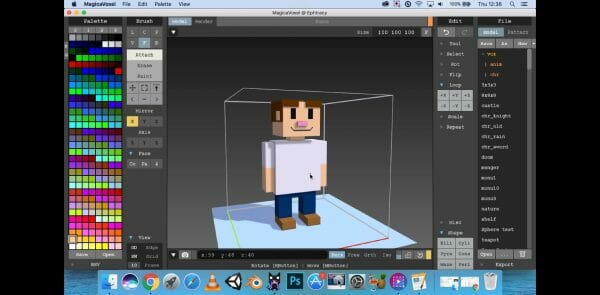
Background Art
While characters are great, most people don’t want their characters running around on a plain black screen. This is where the background game art comes into play. Background game art focuses on everything just related to the setting and location. This can include buildings, terrain, skies, nature, and so forth. If it’s not important for the character to interact with – but is important to give the character an atmospheric level to traverse through, then you’ll have encountered background art at its finest.
Object Art/Modeler
Beyond characters and backgrounds, there is one more aspect to the main video game screen: objects. While not the case for every game, many video games feature a multitude of objects. Some have them for decoration purposes – like generic house decorations – while others have purposeful objects like various guns for FPS games. In either case, making these sorts of objects, whether for 2D or 3D games, can be an entire subfield in and of itself. Especially for more complex video games with lots of extra objects, it almost becomes necessary to have a separate artist just for this aspect.
Texture Art
This is a specific type of subfield aimed mostly at 3D art types. While having a 3D model is great, without textures, you’re stuck using flat colors to spruce up the model and make it appear as the object you want it to appear as. Textures are what allow 3D artists to change that and give the appearance of various textures to 3D objects. This can include things like making a brick pattern for a wall, making a clothes texture for someone’s outfit, or even making an entire character’s face.
This is an expansive sub-field, but without it we wouldn’t have some of the high-quality, life-like models we do today.
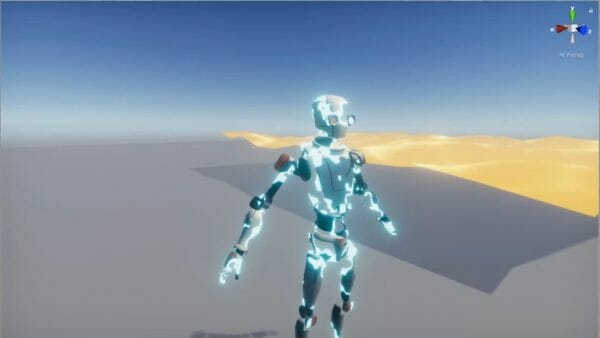
Visual Effects Art
Something that is usually forgotten about for video games is the visual effects. For example, if you’ve ever played a video game as a mage, you’ll know when you cast a spell there’s all kinds of particles and visuals to provide essential feedback to the player the spell is being cast.
Well, unsurprisingly, these sorts of effects represent an entire subfield of game art. And rest assured, this goes beyond mage spells. Any sort of quick effect with particles, as some UIs use, counts as visual effects in this case. This sort of game art is very important as it serves as a way to give extra feedback to the player about everything they’re doing – providing good “game feel” to the project at hand.
UI/UX Art
Game UIs (otherwise known as the user interface) are not only very important to game art, but are also a complete game-changer. Having a bad UI can honestly make or break the entire experience of a game, as it is the main method by which most players interact with many of the essential functions.
Of the subfields on this list, UI/UX design and art is actually the one you’ll see a lot in job postings, since most companies recognize this importance. And this does include a lot of elements. Everything from on-screen text, to mini-maps, to inventory appearance, and so forth needs to have a clean but good-looking user interface to present a polished product.
Animation
Last for subfields in game art, we have one we haven’t talked a lot about yet: animation. Animation is definitely as much a part of game art as is making the actual assets in the first place. If you aren’t making a static image video game like a visual novel, you’re probably going to need someone to animate something. This includes everything from characters moving to a chest opening. Animation is expansive, and makes up several subfields on its own. Nevertheless, it is another aspect of game art that one can pursue.
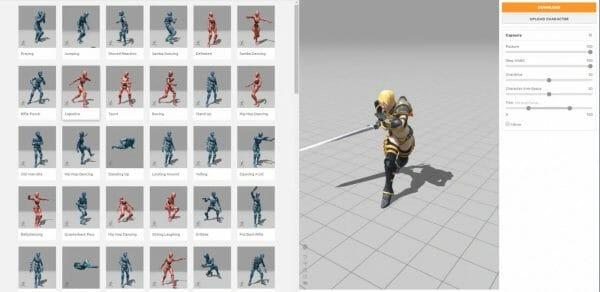
Why Pursue Game Art
Hopefully, you have a good understanding of what game art is, and just how expansive the field is. Plus, if you weren’t an artist already, you probably now have a better idea of what sort of art you can pursue with it. However, before we jump into the career aspects of game art, let’s talk about another important facet: why should you pursue game art? We’ve listed a few points below to outline why this is a good field.
As you delve into the world of game art and explore game art careers, Zenva’s Game Artwork Academy can serve as a comprehensive guide. It offers a rich collection of courses designed to enhance your skills in creating custom 2D and 3D game assets, using popular tools like Blender, Photoshop, MagicaVoxel, GIMP, and Inkscape. As such, it stands as a great resource to fully comprehend the diverse aspects of game art development, from vector art techniques to voxel model creation, helping you create unique games that stand out in the crowd.
The game market is increasing.
It’s no secret that the market for video games is huge. NewZoo reported that, worldwide, the entire gaming industry made $152.1 billion dollars in 2019 alone. However, surprisingly it is still expected to grow in value. In the same article, NewZoo predicted that by 2022, the industry would be worth $196 billion dollars, which is a significant increase! With such market growth, this opens up tons of opportunities for aspiring game artists, since more and more video games will be trying to enter the market.
Gaming jobs are in demand – including artists.
Due to the market increase mentioned above, gaming positions are both open and in-demand. Game artists, along with game developers in general, are expected to see a 9.3% job growth from 2016 to 2026 according to CareerExplorer. This is on top of the already 287,200 positions for game artists – just in the U.S. As such, there is little concern about whether or not you’ll be entering a flooded market.

There are great salary opportunities.
Game art is a highly skilled field, taking hours and hours of work to master fully. As such, game artists can demand a lot of money right out of the gate for their skills. With more experience and specialization, though, game artists can expect an even higher increase in salary compared to many similar fields. We’ve listed a few average salaries below to give you an idea of the lucrative opportunities you can pursue, though keep in mind we’re focusing on US data (your mileage may vary in other countries).
- CareerExplorer: $90,300
- Glassdoor: $56,390
- PayScale: $58,202
Many different art styles are used.
Something many experienced artists often worry about is whether their art style will be acceptable. Many industries have a very specific set of art styles that will be used for their materials, and outsiders will have a hard time getting their foot in the door if their style does not conform enough to this unspoken industry standard. With game art, however, a much wider variation of styles is accepted. In fact, most games strive to use different visual styles so their game stands out from competitors.
As such, there is less pressure to fit into one style or one type of art – whether you’re a 2D or 3D artist, or even a pixel artist, there’s a company out there looking for you!

Indie games are also growing.
So, let’s say you’re not interested in working with some big AAA company. That’s definitely okay! 9-to-5 jobs aren’t for everyone. Instead, you can turn to the indie sector, which is growing as much as the rest of the gaming market. Indie games offer game artists jobs with a lot more freedom. There are also opportunities available to work for a small indie company, or simply freelance. Either can be lucrative for the right artist, so you don’t have to be boxed into going to the office every day!

Game Art Careers
It’s finally time to talk about pursuing game art as a career. So, how does one go about doing that? Well, there are a few things you’re going to need to know and prepare in order to pursue game art professionally.
In your journey to a successful career in game art, Zenva’s Game Artwork Academy can be an invaluable tool. This comprehensive curriculum offers a plethora of courses focused on creating custom 2D and 3D game assets using popular tools like Blender, Photoshop, and more. From learning the basics of 3D modeling to building a rich portfolio of game art assets, it provides a foundation to not only customize the appearance of your game but also make it uniquely stand out in the gaming industry.
General Requirements
First, before you prepare for a career in game art, you should know what will be required of you. We’ll talk about that first, since you’ll need to know it to actually do the preparation work outlined next.
- Strong knowledge of art fundamentals (perspective, composition, etc.): This is where all artists start, and without understanding these fundamentals, art will be a lot harder in general!
- Basic knowledge of computer science: While game artists aren’t expected to be technical experts, it helps to understand the overall process for how games are made. Not only does it demonstrate a passion for the subject, but makes you more competitive when it comes to working in a team where you will need to talk to the technical experts.
- Understanding of different digital art requirements (pixel sizes, polygon counts, etc.): Similarly to the above, you should know how to create art within the confines of current technology. In other words, remember that your art assets can’t have 500,000 polygons all the time unless you want to break someone’s computer. Knowing how to adjust art for limitations is highly important in this industry!
- Experience in 2D traditional art, 2D digital art, 3D modeling, 3D texturing, 2D animation, or 3D animation: Obviously, you need to know how to create art in order to be a game artist, so this one should hopefully be obvious!
- Proof of skills: In addition to the above, you need to actually have a “resume” of art that shows you do indeed possess the skills you say you do. We go into this more down below, but just keep this in mind as you start your job hunt.
- Excellent written and verbal communication: Game artists are rarely the sole developer of a game, so knowing how to communicate with a team is essential!
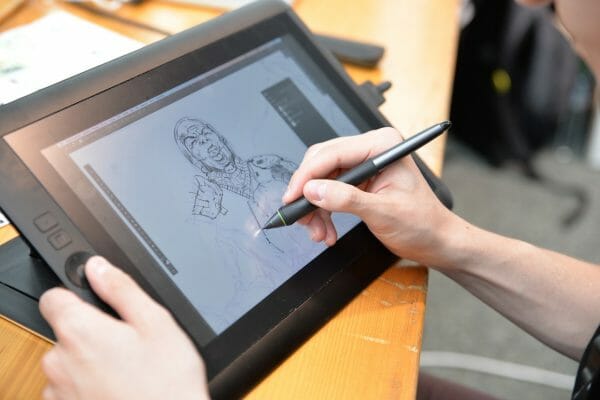
Tips for Preparing
With requirements out of the way, let’s talk about how you can actually prepare to fulfill those requirements and get you set up with some resources to use!
Learn how to create art in the first place
As mentioned in the requirements, you need to know how to create art before you can be a game artist. If you’re already someone who considers themselves an artist and have worked for many years, then you definitely have this nailed down already. If you’re still what you’d consider a beginner though, you’ll need to take a lot of time to sit, study, and make a dedicated effort to improve your art.
While we’ve included some resources below to help, keep in mind learning how to create art usually takes several years. However, if you keep practicing constantly, you’ll get better with every step!
- Art Fundamentals by Swatches
- Digital Art for Beginners by Brad Colbow
- Game Artwork Academy by Zenva
- Composition for Noobs | Beginner Guide by Flow Studio
- Unity Animation for Beginners by Tim Bonzon
- HOW TO PAINT 2D GAME ART IN PS – STEP BY STEP TUTORIAL by Blackthornprod
- Game Art Tutorials by GDQuest
- Making a 2D game – Cannonballers workflow in photoshop by Trent Kaniuga
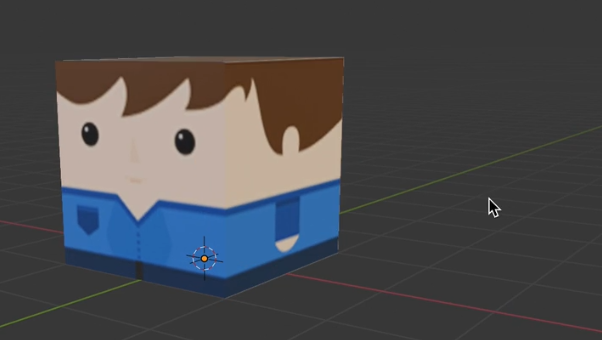
Understand the entire game development process first
Game artists usually work with a team – some versed in coding, some versed in audio, and so on and so forth. Being able to work with this team will, first and foremost, require an understanding of how games are developed and how each person’s role plays a part. This is where you can pick up a lot of the needed basics of computer science that will help you both communicate better and just overall improve how you create assets for games.
We’ve compiled a helpful list so you can take the first steps in understanding this process for your future career prospects!
- How to Make a Game – Making Video Games from Scratch by Daniel Buckley
- So You Wanna Make Games Game Art Series by Riot Games
- Game Development for Noobs by Flow Studio
- An Entire Software Development Life Cycle by ForrestKnight
- How Video Games Are Made Step By Step by Game Dev Republic

Make small game projects on your own
As mentioned, you’re going to need to have some proof of skills and an understanding of digital art requirements for games. The best way to fulfill both as a game artist is to simply make your own small game projects. Now when we say small, we do mean small. So, don’t jump in and make an MMORPG that you don’t have any clue how to code.
Instead, make simple games like platformers, 3rd person shooters, and other sorts of games you’d probably see in the 80’s and early 90’s. These sorts of games generally have tons of tutorials, so you won’t have to learn a ton about coding if you don’t want to. It also let’s you focus on the thing you’re here for: game art.
Below, we’ve collected some basic games you can make and practice with.
- Create Your First 2D Game in Unity by Zenva
- Create Your First 3D Game in Unity by Zenva
- How To Make A PhaserJS Game! by Egee
- How to Make a Complete Game with Godot by Daniel Buckley
- How to make a 2D Platformer by Brackeys
- Retro Game Development Academy by Zenva
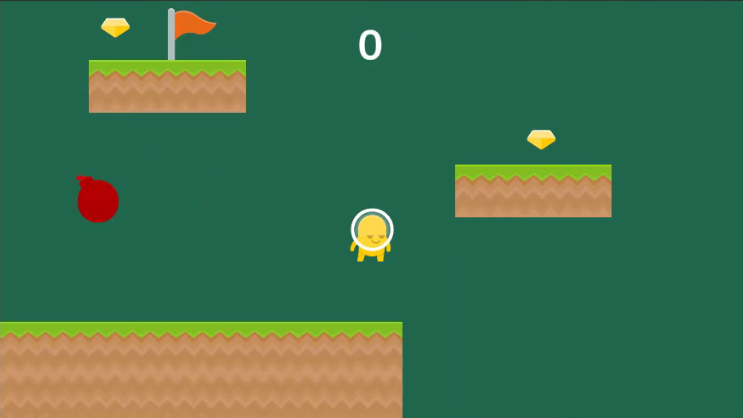
Learn how to adapt your style and art in general
While the industry is open to many styles, don’t think you can do just whatever you want all the time. Each game will have a specific aesthetic style decided by the art lead, and you’ll be expected to be able to adapt to that style. So, as part of the art experience you’ll need for a career in game art, you’ll also need to know how to tweak how you naturally create art to achieve the required aesthetic style for each game project. And believe us, every game is different, so the more flexible you can be with the style, the better!
As usual, we’ve set you up with some resources to help you practice adjusting your style!
- How To Find Your ART STYLE (In 6 Minutes!) by Royal Skies LLC
- Stylized Game Assets Tutorial for Beginners by Stylized Station
- 5 GREAT Game Art Styles for BAD Artists by Lost Relic Games
- 3 Tips to Making Simple, Gorgeous Artwork for Your Game by Game Dev Unlocked

Create a portfolio
After doing all the prep work above, you’ll probably be ready to set up your resume. However, when it comes to game art, there’s something a bit more important than the traditional resume where you list out your previous work experiences, contacts, and similar: your portfolio. A portfolio is simply a reasonably sized collection of your best work that showcases you do indeed know how to make game art.
For almost all fields of art, this is frankly 10 times more important than your actual resume, as it is the direct evidence of your proof of skills. As such, putting time and effort into crafting the best portfolio possible is going to be only of benefit to you!
While there’s no exact science here, we have found some helpful resources to help you build your portfolio to share with the world!
- How to Build a Coding Portfolio by Daniel Buckley
- Making an Online Portfolio for Artists by kelogsloops
- Make your own PROFESSIONAL PORTFOLIO for your ART by Nadiaxel
- Quick TIps | Creating a professional Portfolio for Illustration and Concept Art by Dave Greco
![]()
Yes, we know. The idea of networking is not everyone’s cup of tea. Nevertheless, for game art, it is still just important to do. Knowing people in the industry is a big boon when seeking work. However, even just getting involved in game industry communities can count as networking too, since indie development is always an option for a game artist. Nevertheless, networking is essential, because even if you have a portfolio, it doesn’t do you any good if you don’t show it to anyone. Networking presents opportunities to improve your communication, show you’re a team player, and also add in, “Hey look at my art.”
Since networking is not a beloved skill, though, we’ve set up a few resources to help you improve these skills!
- 10 Simple Ways To Improve Your Networking Skills by Video With Impact
- Networking in the Gaming Industry by Full Sail University
- Networking Etiquette for the Modern Games Industry Professional by GDC

Consider specializing in a subfield
Earlier we pointed out game art has a lot of specialties, such as character design or user interface design. Though it’s not required at all if you want to be a jack of all trades, which can actually be beneficial if you’d rather stay in the indie sphere with smaller teams, specializing can have huge implications for your game art career. Especially with bigger companies, you’ll often find they specifically want to target these specialists so each game art element gets someone focused solely on that.
While we can’t share any specific resources on this one since there are a lot of specializations, it is at least worth taking your time to consider this aspect as you prepare. Also, don’t feel you need to start your game art career with a specialization. You can specialize at any point once you understand your favorite niche. Nevertheless, be sure to keep your eyes on the future with this one!
Game Art Wrapper
Game art is an extremely rewarding field, both for 2D and 3D art. It is equal parts creativity and technical know-how, and it allows you to participate in a fast-growing industry. Without game art, games as we know it truly wouldn’t be what they are – amazing visual extravaganzas for us to enjoy (beyond the interactive elements at least). Regardless of whether you pursue steady work with a big developer or pursue freelance, game art is surely to be a rewarding experience and help you achieve your dreams.
In relation to creating game art and pursuing game art careers, Zenva’s Game Artwork Academy offers an extensive compilation of courses designed to guide you in creating your unique 2D and 3D game assets. This curriculum aims to inspire your creativity and proficiency with powerful tools like Blender, Photoshop, MagicaVoxel, GIMP, and Inkscape. Offering not merely theoretical knowledge, it pushes you further into creating a portfolio using different artistic styles such as pixel art, vector art, and 3D models, making it an invaluable resource for aspiring game art creators.
We hope this article has helped you understand game art better, and we can’t wait to see more game artists out there in the world!
Did you come across any errors in this tutorial? Please let us know by completing this form and we’ll look into it! FINAL DAYS: Unlock coding courses in Unity, Godot, Unreal, Python and more.




